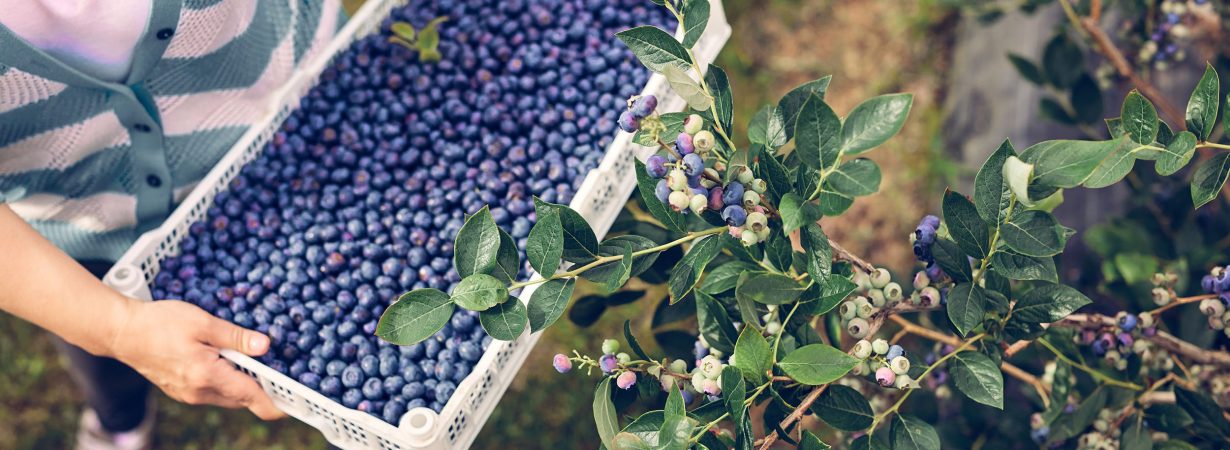South African blueberry season begins
The blueberry industry in South Africa, although relatively nascent in comparison to other countries, has seen a steady increase in production and exports.
This year, growers are optimistic about the country’s output, anticipating a 10% growth in exports and expecting to achieve its target of 25,000 tons of blueberries, a significant increase from last year’s exports of just over 22,000 tons.
Although last year the country faced challenges due to a long winter and delayed harvest particularly in the country’s Western Cape Province, which dominates blueberry production, CEO of Berries ZA, Brent Walsh, is looking forward to a fruitful season and moving forward with exploring new trading markets and marketing new blueberry varieties for both local and international markets.
Walsh says they’re supplying local markets until July-August, since that’s when the industry sees an increase in supply in Northern South Africa.
“After that, production starts to move south of the country into the Western Cape and then by September you’ll see a lot of the harvest happening,” he explained.
“Our main export seasons are October, November, and halfway through December. So, for a while you’ll see some berries only. We even get some berries from Zimbabwe at the moment because they’re even earlier than ours.”
Walsh explained that although there was a significant worldwide shortage of blueberries in the market last year, which led to an overall price markup, South Africa’s industry didn’t do horribly in comparison.
“We were about 12.5% short on what our exports were the previous season, but I think the pricing certainly helped growers and exporters in terms of the commercial aspect,” he explained.
“We should be back around the 25,000-ton mark for exports. We are seeing some improvements in our logistics channels, specifically talking about our container terminal management, which was an issue in 2022.”
The labor strike, he said, was a significant problem for exports that year, and is the main challenge this upcoming season.
A strike launched by the two main labor unions two years ago for employees of South African state-owned ports and rail operator Transnet led to a growing backlog of exports.
According to Walsh, the price uptick helped BerriesZA do more air freight than sea freight and helped with logistics challenges along the way.
“There’s been a huge amount of pressure on Transnet by the fresh produce industry over the last six months,” he explained. “They have been engaging with us and they’re showing signs of improvement in terms of turnaround, loading containers, and offloading times for the vessels.”
He urges the fresh produce industry to work together with the organization to find a reasonable solution.
“We need to get the containers into vessels as quickly as possible because we know blueberries are highly perishable, and if we don’t get them onto shelves in retail stores as quickly as possible, the quality deteriorates over time and that will impact us negatively.”
Currently, the organization is looking to develop new varieties and reach new markets.
“Our growers rely on a relationship with the nurseries who can provide them with the genetics from development houses, and those are all internationally marketed blueberries; they’re certainly not unique to South Africa.”
Walsh also emphasized that they want to open the door to exporting to new countries, although the berry industry in South Africa is one of the youngest in the market.
“We are catching up, working through our applications with the receiving countries to start the pest risk assessment process,” he said. “We export to about 25-29 countries and obviously the UK and the EU remain our main trading partners.”
Walsh also mentioned the improving relationship with Middle Eastern countries, which are seeing a significant increase of 50% in blueberry imports from South Africa year-on-year.
Regarding their relationship with India, he said it’s difficult to put a timeline on when the trading relationship will pick up. “It could be six months, it could be 12 months, it could be 18 months. It really does depend on how efficient the engagement is between the respective departments of agriculture.
He said, however, that India is the nearest new market on the horizon and that they will try to begin chasing the Chinese market as soon as possible after that door is open.
31.05.24
Source: Freshfruitportal.com







